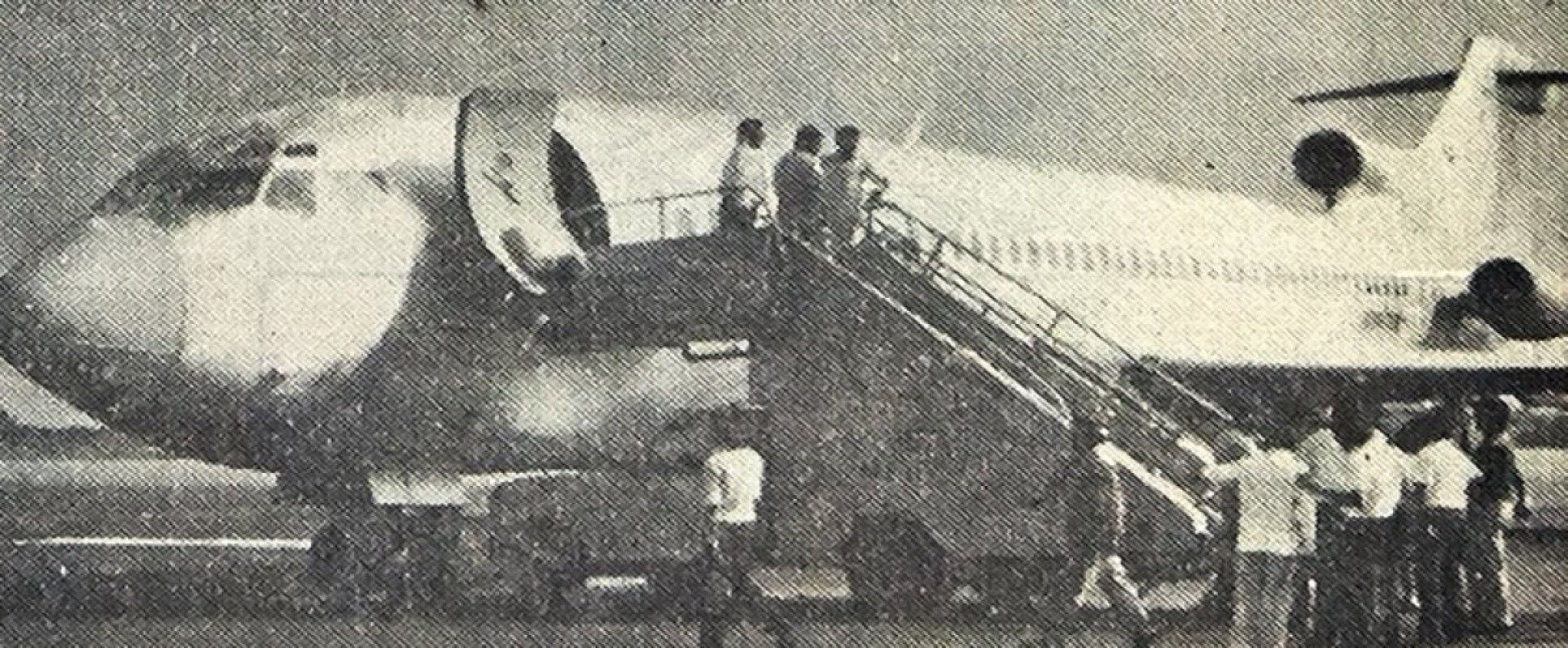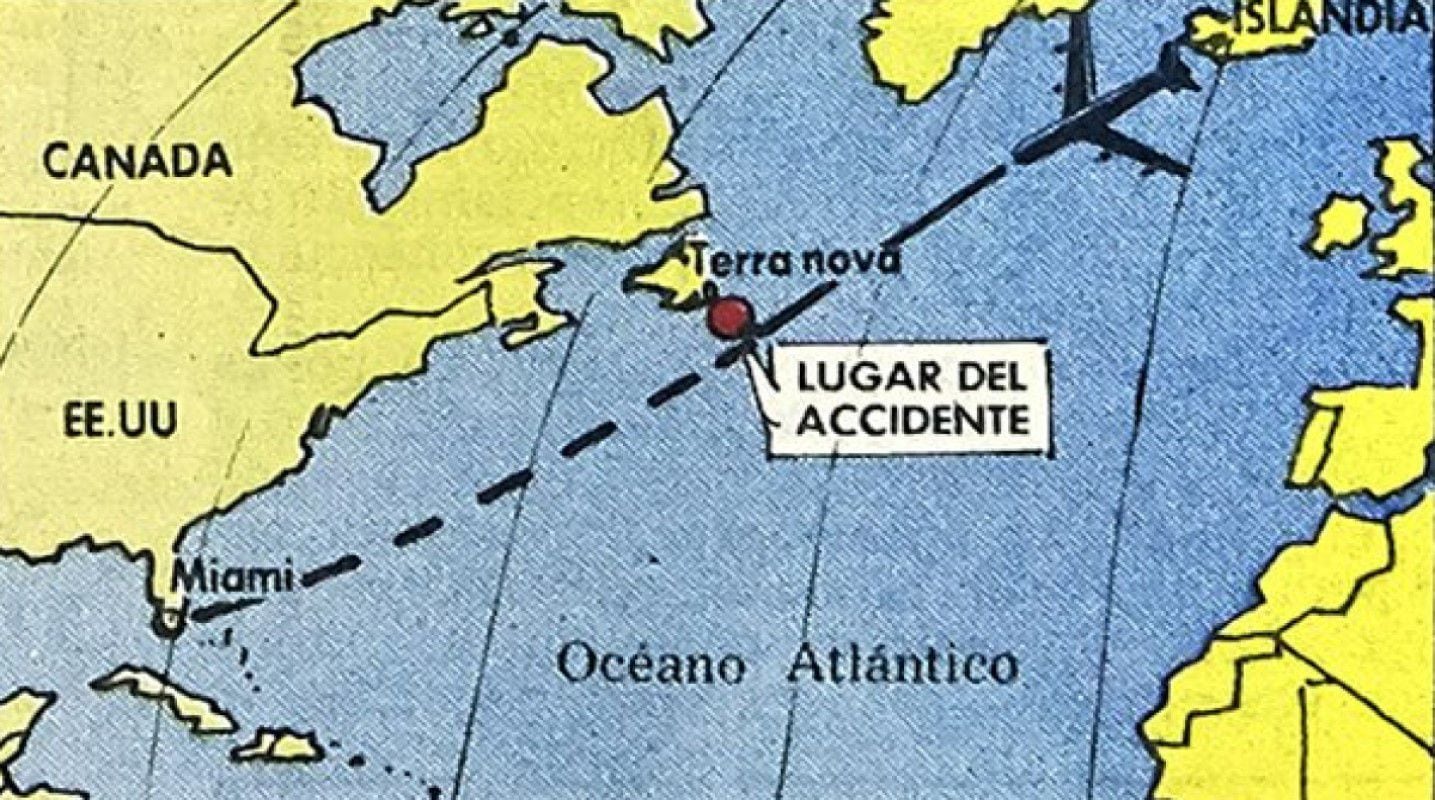This February 15, 2022, a shipwreck in the North Sea has so far left ten dead. It is the Spanish fishing vessel Villa de Pitanxo that sank off Newfoundland (Canada) and that has put the 24 crew members on board on the edge of death, almost all of them Spanish, but also Peruvians and Ghanaians. The roughness of that sea, north of the American continent, has a tragic story that includes that of a Peruvian plane from the Faucett company, a Boeing 727, which disappeared on September 11, 1990, 180 miles southeast of the coast of Canada. An area close to that of this last accident.
READ ALSO | The number of deaths after the sinking of a Spanish ship in Canada increases to 10; there are Peruvians among the crew
The faucet plane made a “transfer flight” from AirMalta, where company personnel had gone to work due to an agreement signed beforehand; for that reason they returned to Peru after fulfilling their air commitments. The Boeing 727 departed from the Malta International Airportknown as the “Valletta Airport”, and made some stops, first in Milan (Italy), then in London (England), and continued to Iceland.
Near his next stop, in the Gander International Airport, Newfoundland (Canada), the tragedy occurred, which ended with the plane lost and possibly anchored in the cold waters of the North Sea. They were on Faucett’s ship, that September 11, 1990, sixteen occupants (10 passengers, including a child, and six crew). At the beginning of the journey there were 18 people, but two of them left the plane during the stops they made.
The news of the disappearance of the Boeing 727 was given that same day. Your emergency was declared at 1 and 11 in the afternoon (Peruvian time); and the next day, September 12, Trade pointed out what was believed to be true until then: strong “return winds” would have caused the plane to fall, some 180 miles southeast of Cape Race, Newfoundland (Canada).
Meanwhile, in Lima, Faucett’s International Freight Manager, Hernan Vasquez Grandadetailed to the press the number of the occupants, among whom were relatives of the crew. Apparently, the route from Iceland to Canada (arctic area) was the safest. It was not a commercial flight, moreover, and what the boeing was to get to Canada to refuel for his final leg to Miami (USA) and from there to lime, Peru.
SEE ALSO | Relatives of Peruvians who disappeared on a Spanish fishing boat: “We can only pray”
Technical faults were ruled out, since it was a new plane, bought by $25 million in the United States in 1987, and flew with few passengers. Even, In those first hours of the disaster, it was hoped that the crew and passengers (16 in total) would still be found alive.n, this because Faucett’s plane was able to stay afloat in the water for a while and had four rubber boats, with capacity for 35 people each.
The version of the Peruvian consul in Montreal, John Garlandindicated that 200 miles from reaching the Canadian shores, the crew had reported that they were running out of fuel, which became another possible cause of the air disaster.
The damaged plane had a capacity for 170 passengers. Initially it was destined for domestic routes, such as Lima-Cusco, and then for international flights to the United States. The agreement with Malta to take that plane to those destinations was a deal that in June of that same year was badly received by the pilots of the national airline.
What came next: the Faucett plane was swallowed by the sea
Two days after the accident it became known that the governments of Britain Y USA would help in the search for the Peruvian plane. Canada had assumed the permanent search. Everyone hoped that the ship had made an emergency splashdown in the middle of Atlantic, at least that was what the crew had indicated by radio shortly before losing contact. That’s why time was money. They couldn’t take too long to find them because after a few days the chances of survival would be reduced to a minimum.
MORE INFORMATION | Faucett: the day that 127 people could die in a hijacked plane in the sky of Lima in 1991
The entire search was concentrated in the southeastern area of Newfoundland (Canada), and covered an area of 500 thousand square kilometers. There were moments of deceitful hope with testimonies of “lights in the night”, in the dark of the sea or choppy radio “distress signals”. The north atlantic areawith waves of up to two meters, was a hornet’s nest of planes and boats that crossed it to no avail.
The terrible northerly winds, which buffeted the planes, were spoken of again as a possible cause of the B’s emergency splashdown.oeing 727 from Faucett. These same winds made the very search for the hapless plane difficult.
The September 14, 1990, three days after the accident, Trade reported a complaint: “They were never used Boeing 727 on transcontinental routes,” read the headline. It was indicated that its low capacity to store fuel made it necessary to have this prevention. That information came from the canadian press in the newspapers `The Gazette’`The Press Y `The Globe and Mail’.
READ ALSO: Faucett: the first commercial aircraft built in South America was made in Peru and this is its story
It was also reported that untilsniffer helicopters” of Canadian Coast Guard They were collaborating with the rescue operation of the Peruvian Boeing. But, to the team’s dismay, the weather conditions worsened with a thick low fog and everything became even more difficult.
Over the days, in Lima, Faucett officials began to show signs of resignation. One even ruled that “bad luck caused the accident.” These same officials ended up admitting that, indeed, an aircraft like that (Boeing 727) had never been used for transcontinental routes, due to its limited fuel capacity.
However, they protected themselves by saying that the plane of Faucett he was on a non-commercial return flight, and on a route that is frequently used by planes that do not have long range, even smaller than the 727. An accident flight from Iceland would have forced the pilots to divert at times and consume the reserve fuelcalculating that they would be supplied in Canada. But the times would not have suited the crew well. By then there was little hope of finding them alive.
However, the Canadian government promised to follow the rescue operation until the last moment. The September 15, 1990on the front page of the newspaper it was said: “Canada promises not to abandon the search for the Faucett plane”. They expanded the length of the search to about 775 thousand kilometers. By sea and air, the task did not stop some 290 kilometers southeast of Cape Race, in Newfoundland, from where the last call for help had been received.
SEE ALSO | Elmer Faucett and the secrets of his other talent: motorsport
For a moment it was thought that part of the plane had been found in an area of the sea, but it was not true. The plane wreckage found belonged to another damaged ship. It was as if the sea had swallowed them.
Although the Canadian authorities a search of 15 to 20 days had been proposed, already for the September 20, 1990Nine days after the unfortunate event, the aquatic investigations were suspended in Canada by a rescue group that understood that it was already impossible to find someone alive. The decision was endorsed by the Canada Rescue Centerwhich issued a report on the matter.
The Canadian Transportation Safety Board (TSB) indicated that Faucett’s plane was likely sunk at sea. Ultimately, the main pilot was blamed for the accident: poor flight planning would have cost him and his 15 companions in the tragedy their lives.
DO YOU KNOW OUR VIRTUAL STORE?
In our virtual store we have a selection of the best illustrations, photos and historical pages of El Comercio that you can easily request through a simple form located at the following address: https://www.tiendaelcomercio.com/.
- El France: the story of the huge ship that arrived at Callao and could not enter the terminal because it was as big as a 14-story building
- La Herradura: the day an oil tanker ran aground off Chorrillos beach in the 1960s | PHOTOS
- When Jacques Cousteau arrived in Peru to ask Fernando Belaunde for support for his Amazonian mission | PHOTOS
- José Romanet: the pilot who was not afraid and the last message he left before disappearing in the sea of Ancón
- When a star of “The 10 Commandments” and the first “Bond Girl” arrived in Peru
Source: Elcomercio

:quality(75)/cloudfront-us-east-1.images.arcpublishing.com/elcomercio/VOUYO4DAT5EE3HT3W4GPPTVNO4.jpg)




:quality(75)/cloudfront-us-east-1.images.arcpublishing.com/elcomercio/UHH47E2VSRDY5LUVGO5UAYIFZU.jpg)


:quality(75)/cloudfront-us-east-1.images.arcpublishing.com/elcomercio/BUNML4TQNVHSBOBMY5FC3QEM2M.jpg)
